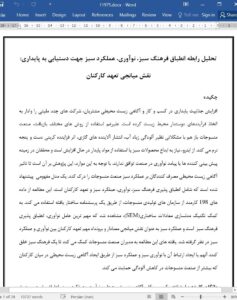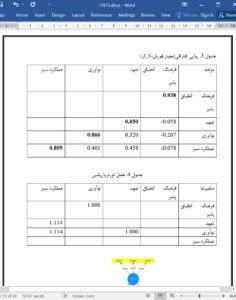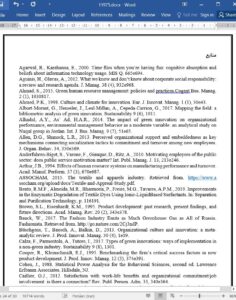Abstract
Increasing sustainability traction in business and the environmental consciousness of customers have forced multinationals to adopt eco-friendly processes. Despite using the different recycling approaches the textile industry is still fighting with problems like higher water pollution, emissions, and increased carbon footprint. Hence, the need for innovating green products or using sustainable material is growing and researchers still have discordance on the predictor and outcome of innovation in the industry. Considering this, the present study is tried to understand the impact of the environmental consciousness of consumers on the green performance of the textile industry. A conceptual model has been proposed which includes adaptability of green culture, innovation, green performance, and employee commitment. The study uses the data of 198 employees from textile manufacturing organizations through a structured questionnaire. With the help of the structural equation modeling (SEM) technique, it was found that the most relevant factor of innovation is the adaptability of green culture and green performance was found as the major outcome and significant mediating role of employee commitment between innovation and green performance. The findings of the study would help the textile industry managers to create a green culture by creating its link with green innovation and green performance through developing environmental consciousness among the employees which further support the textile industry in pollution reduction.
1. Introduction
Emerging markets (EM) potential economic growth has lifted millions of people out of poverty, conversely, it has led to budding environmental damage and resource degradation (OECD, 2017). EM dependency on natural resources and their vulnerability to climate change threats poses risks for their future economic growth.
Groundwater depletion, degrading air quality, unavailability of sanitary landfills to dispose of the generated waste are some of the major environmental challenges of EM (EMS, 2017). Certain industries contribute to significant carbon footprint such as the Textile industry specifically, fast fashion, cheap and dirty textiles. EM such as India and China are the largest cotton producers and exporters in the world and half of the global textile industry is in the Asia-Pacific region. The textile industry is water-intensive as it requires water in all stages of manufacturing. The wastewater from textile manufacturing processes comprises of chemicals, salts, dyes, and solvents that are harmful to the environment (Bento et al., 2019; Samanta et al., 2019; Saxena et al., 2017).











